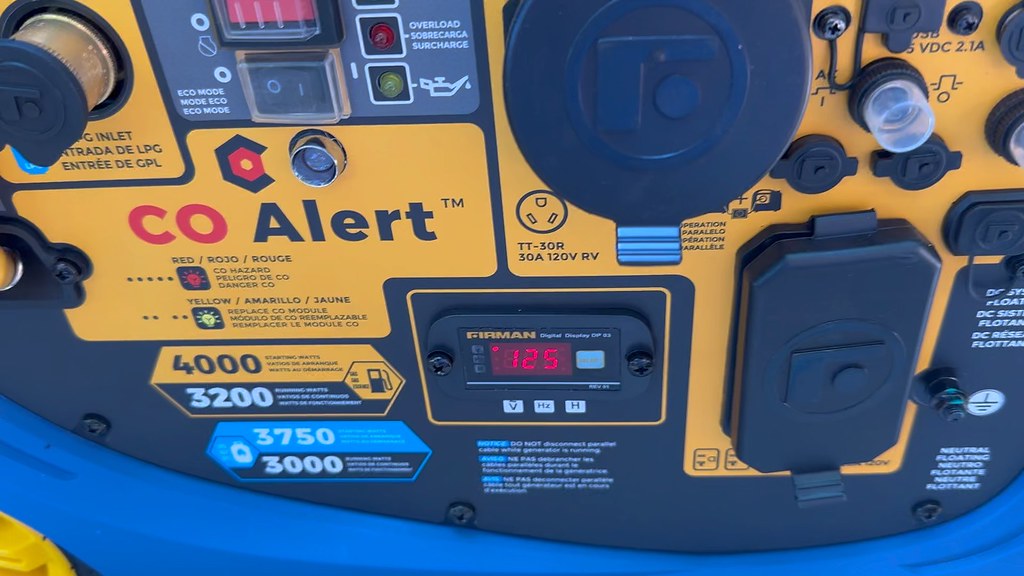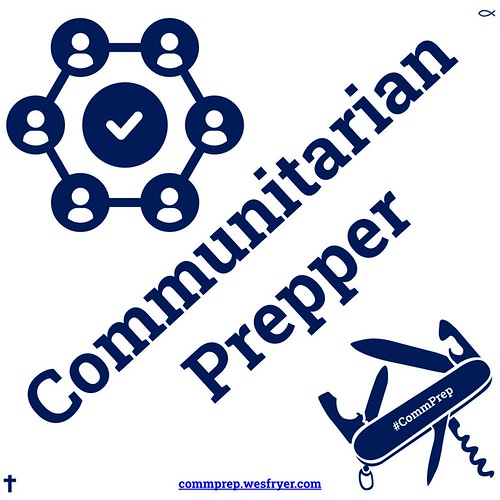Home Electric Generator Test
Yesterday I tested my home backup electric generator for the first time and created a 16.5 minute video about the experience. In this article, I’ll share some of the highlights and key points from the video, which focuses on what it means to be a “Communitarian Prepper,” why it’s important to prepare and TEST your home setup for emergency power generation, and some of the next steps I plan to take for our family.
1: Understanding Communitarian Prepping
Being a communitarian prepper means taking proactive measures to prepare for emergencies while considering the well-being of your community. It goes beyond individual survivalism and embraces the idea of supporting and assisting our neighbors during challenging times. As I’ve watched numerous YouTube videos in the past few years relating to prepping as well as firearms / guns, it seems like a large number of people are imagining some kind of hypothetical “zombie apocalypse” scenario where they will have to become “lone wolf survivalists.” That is NOT my perspective on emergency preparedness, so that is why I’m defining myself as a “communitarian prepper.” There is NO WAY any of us can survive or thrive in a significant emergency situation without the help of others in our community. While none of us has or can have unlimited resources to help a huge number of people in an emergency, all of us have some resources which ideally can help some of our neighbors and community members, as well as those in our immediate family. That’s the kind of prepper and “good human” I aspire to be and continue becoming.
2: Introducing the Furman HU-3242 Dual Fuel Generator
I recently acquired a Firman WHO3242 Dual Fuel Generator, which I purchased on sale at Costco. This generator caught my attention due to its impressive features and capabilities. It offers backup power for essential appliances during emergencies and serves as a reliable energy source for camping trips. While it features both standard 20 A 110 outlets (2) and a larger RV outlet (TT-30R 120V 30A RV,) it does NOT output 220 volt power. This means it’s more capable than smaller units, but may not be suitable as a “whole house” power replacement generator.

3: Past Power Generation Experience
Throughout the years, I’ve had several experiences with generators, from using them during camping trips to enduring power outages caused by severe ice storms. These encounters have motivated me to invest in a reliable power backup solution for my home and outdoor activities. Since I’ve used a CPAP machine for several years now, I’ve needed “off grid” capabilities to use mine when we’ve been family camping. As with many aspects of being a “communitarian prepper,” I think having (and practicing the use of) a backup electrical generator can have multiple benefits for our family in addition to emergency preparedness. Being better prepared and equipped for family camping is one of those benefits!

4: The Benefits of Dual Fuel Capability
One of the primary reasons I opted for the Furman HU-3242 Dual Fuel Generator is its dual fuel capability. It can run on either gasoline or propane, providing flexibility and addressing the challenges associated with the shelf life of gasoline. As I discussed in this video, however, the SPECIFICS of how long your generator can operate is dependent not only on fuel type and capacity, but also the LOAD you are putting on the generator. the load is based on the number of household appliances / devices you are powering. One of my “next steps” is to obtain a home electricity usage monitor to determine exactly how much “load” our refrigerator and deep freeze require, to calculate how long I’ll be able to run my generator and power our essential home appliances in the case of a prolonged power outage / power grid failure. I also want to calculate the excess electrical capacity I’ll have, since we may need to power a portable heater, fan or air conditioner (depending on the season) as well as chargers for our various electronic devices. We’ll also want to power our home Internet router and WiFi network, to continue accessing the web (as well as powering our smart home devices) if Internet access remains available during the emergency.
5: Selecting the Right Location for the Generator
Determining the optimal location for the generator requires careful consideration. I prioritize protecting it from the elements while ensuring that the extension cords reach the appliances I intend to power. Safety and security are paramount in deciding where to position the generator. You never want to operate an electrical generator indoors (like in a garage) and you also want to be careful to direct exhaust fumes away from windows and household air inlets.
6: Starting Up and Testing the Generator
With the generator properly fueled and oiled, I demonstrated the startup process in my video. It’s crucial to allow the generator to run for a brief period before plugging in electrical devices. This ensures a smooth and stable power supply, and also avoids damage to the generator or the devices you are plugging in. This particular generator features an “electrical start” option, which is super handy and easier than using the “lawnmower-style” pull rope starter. However, you need to charge the internal electrical battery in advance, and be sure it’s kept charged as part of your regular generator maintenance plan.
7: Assessing Power Output and Load Capacity
During the test, I connected my refrigerator and deep freeze to the generator using extension cords. By monitoring the generator’s readout, I hoped to determine its load capacity and assess whether I can power additional appliances simultaneously. This information (eventually) will help me plan for various emergency scenarios effectively. I need to read more of my generator’s operating manual to learn exactly what the different readout options mean. I hope to record and share another video soon where I share more about this, also using data from the home electricity usage monitor I’m going to order soon.

8: Overcoming Challenges and Considering Future Needs
In my video I acknowledged some of the challenges associated with emergency preparedness and generator usage. Additional supplies such as stabilizer for gasoline, extension cords, grounded power strips, and a thorough understanding of electrical load calculations are essential components of effective preparedness too. Yesterday’s tests highlighted several additional items I need to purchase and create (like a sized foam insert to put in my sliding sunroom door) as well as a custom sized dowel to lock / secure the partially opened door.
9: Expanding Emergency Preparedness Efforts
Beyond powering crucial appliances, I recognize the need to consider other electrical needs during emergencies. Charging devices, maintaining internet connectivity, and preparing for various contingencies are all part of a comprehensive emergency preparedness plan. I plan to continue to adapt and enhance my preparedness efforts as time goes on, I’m able to allocate more family resources to these needs, and technologies continue to improve.
One of my long term goals (which I did not mention in this video) is obtaining a large home battery for electricity backup purchases, like a Tesla PowerWall. I’m interested in tracking the development of new “solid state battery options” which promise to be easier and safer than other backup battery options now available on the market. Eventually, I want to have home-mounted solar panels, as well as portable / mobile solar panels (which we can use camping or I can use to setup a mobile HAM radio operating station) that can charge our solid-state batteries used to power appliances and charge our devices.
10: Embracing a Faith-Based Approach
In conclusion, I want to emphasize that while emergency preparedness is crucial, it should never be accompanied by fear and anxiety. I firmly believe in the power of faith and the assurance that proper preparation, combined with trust in a higher power, can alleviate unnecessary worry during challenging times. This is a topic I address in more detail on my Christian blog, “PocketShare Jesus,” and in social media posts (including Instagram, Mastodon, and Twitter) using the hashtag #dw4jc, which stands for “digital witness for Jesus Christ.” (I’ve almost finished a book with this title.)
In my original video, I shared my experiences and challenges, encouraging others to embark on their own preparedness journeys. By documenting and sharing my progress, I hope to inspire individuals to explore their own emergency preparedness endeavors.
Emergency preparedness is an ongoing journey that requires continuous learning and adaptation. I encourage you to share your own tips, suggestions, and experiences in the comments section below. Together, we can build a strong and supportive community focused on preparedness and resilience.
Remember, the key to effective emergency preparedness lies not only in tangible resources but also in the faith we have in God and His provision. By combining practical preparations with a steadfast belief, we can face uncertainties with confidence and peace of mind.
Thank you for joining me on this communitarian prepper journey with a dual fuel generator. Stay safe, be prepared, and let’s face the future with optimism, resilience and faith. 🙂

AI Disclosure: I accessed the auto-generated YouTube transcript of my video using youtubetranscript.com. I then used ChatGPT 4.0 (ChatGPT+) to create this multi-section article version of my video transcript, which I then manually edited and refined. Lastly, I used ChatGPT to create a short video summary (included as the video description on YouTube) as well as the hashtags to use sharing this video on social media.


